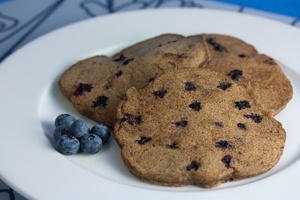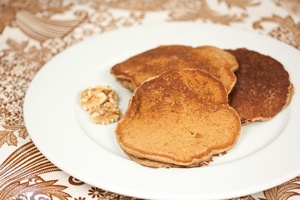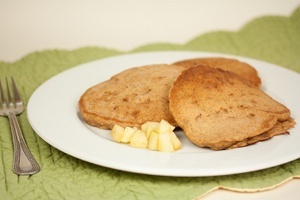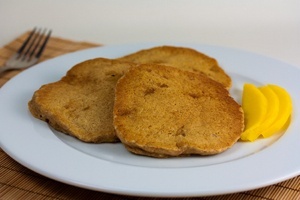Veganbaking.net
Vegan Baking Recipes
Vegan Bread Recipes
Vegan Enriched Bread Recipes
Vegan Yeasted Enriched Bread Recipes
100 Percent Rye Bread
100 Percent Rye Bread
5
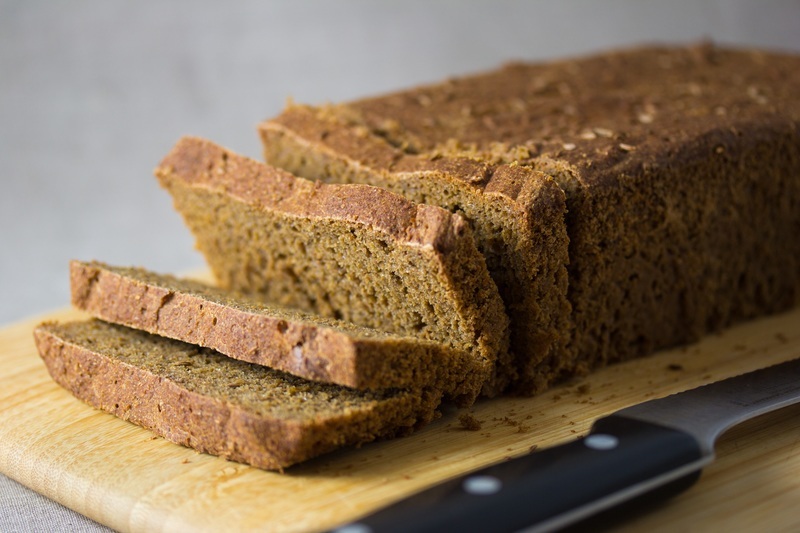
After falling in love with rye breads I became fascinated with developing a bread containing 100 percent rye. I knew that taking all of the wheat flour out of a bread recipe would wreak havoc on the end result and a high-rising crusty bread would not be obtainable. This is because wheat flour is unique in that it contains two proteins in the wheat endosperm called glutenin and gliadin. When these proteins hydrate and undergo friction, they unravel like balls of yarn, bind together into sticky strands and form a structure building network. This elastic web of protein holds in air bubbles during leavening and acts as a structure builder after the bread cools, resulting in a high-rising, fluffy, springy loaf.
The magic of pentosans
Rye flour does contain tiny amounts of gluten and gliadin but not enough to form a considerable amount of gluten in baking applications. Rye flour contains about the same amount of protein as wheat flour but the proteins have no effect on leavening. Rye flour has something else that assists leavening and structure: vegetable gums called pentosans. Pentosans absorb about 16 times their weight in water despite being about only 2 to 3 percent of the rye berry by weight. This gummyness doesn't build structure and trap air bubbles as effectively as gluten but it's still enough to make a favorable loaf. Since the bread is made from all rye flour it has a considerably complex flavor that is not obtainable with a wheat flour-based bread.Contributing extra darkness and flavor to the rye bread
Dark rye flour doesn't contribute to the darkness of this bread. Molasses and espresso powder instead make for a dark brown loaf while enhancing rye flavors. I've also included a touch of sugar to take some of the bitterness off the rye and caraway seeds that contribute a subtle spicy cool finish. The cream of tartar is added to increase acidity. The acidity helps round out the flavor giving the loaf a very subtle tart finish that enhances flavor. The higher acid content also deactivates the amylose enzymes from breaking out too much sugars from the starch which would make the bread excessively gummy.This loaf is considerably denser and flavorful than breads made with wheat flour. It will proof like a wheat bread into a beautiful dome but then shrink down almost to its original size when baked which is normal in this particular recipe.
Find more Rye recipes on Veganbaking.net.
100 Percent Rye Bread Recipe
1 ¾ cups + 3 Tablespoons warm water2 ¼ teaspoons, or one ¼ ounce package active dry yeast
4 cups dark rye flour
1 ¾ teaspoons salt
1 teaspoon cream of tartar (optional)
3 Tablespoons molasses
1 Tablespoon sugar
2 teaspoons caraway seeds
½ teaspoon espresso powder
1) Activate the yeast
In a small mixing bowl, whisk together the warm water and yeast. Allow the mixture to sit for about 10 minutes so the yeast activates.2) Whisk together the dry ingredients
In a medium mixing bowl whisk together the dark rye flour, salt and cream of tartar until well incorporated.3) Whisk together the flavor building ingredients
In another medium mixing bowl, whisk together the molasses, sugar, caraway seeds, espresso powder and stir until just combined. Whisk in the warm water and yeast mixture from Step 1.4) Mix the dough
Add the dry ingredients to the bowl containing the wet ingredients and mix with a wooden spoon in one circular direction for 1 minute. Now stir in the opposite direction for 1 minute.5) Coat the rye dough with oil
Add about 1 Tablespoon olive oil to another medium mixing bowl and spread it around the inside with your fingers. Use a spatula to scrape the dough into the oily bowl. With dampened fingers, form the dough into a ball and rotate it around in the inside of the bowl so it's coated in oil.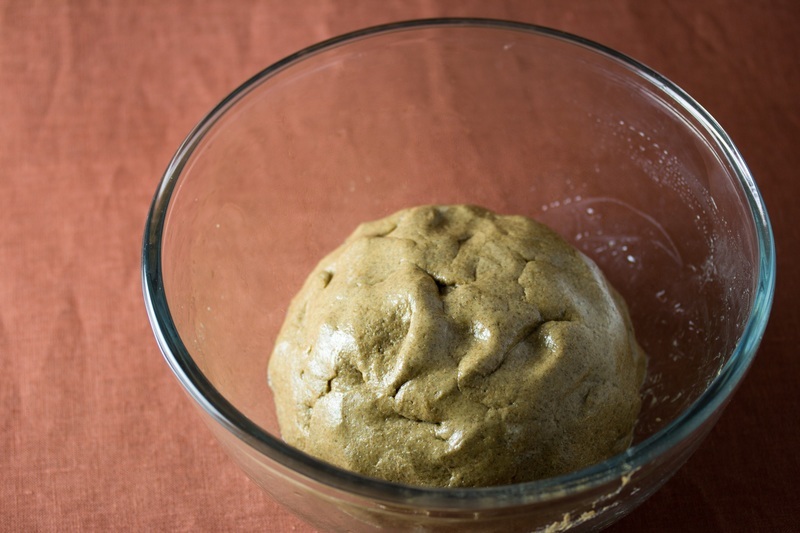
6) Let the dough rise
Cover the bowl with a plastic bag and let it rise in a warm place until it's doubled in size, about 1 ½ hours. Alternatively, place in the refrigerator for about 12 to 24 hours. Remember that we want our dough to double in size regardless of whether it spends a full 24 hours in the refrigerator or rises at room temperature. Feel free to let it rise in the refrigerator for some of the time and outside of the refrigerator the rest of the time.



